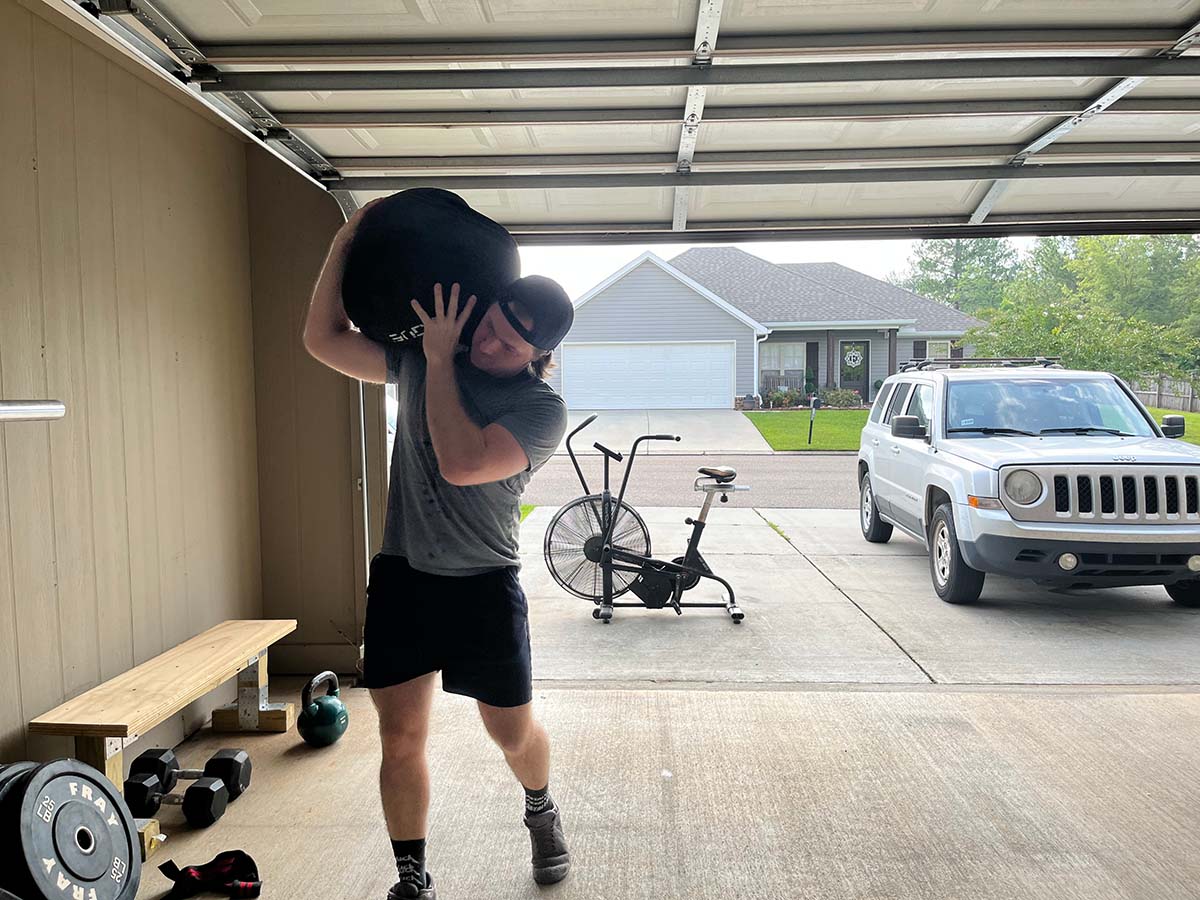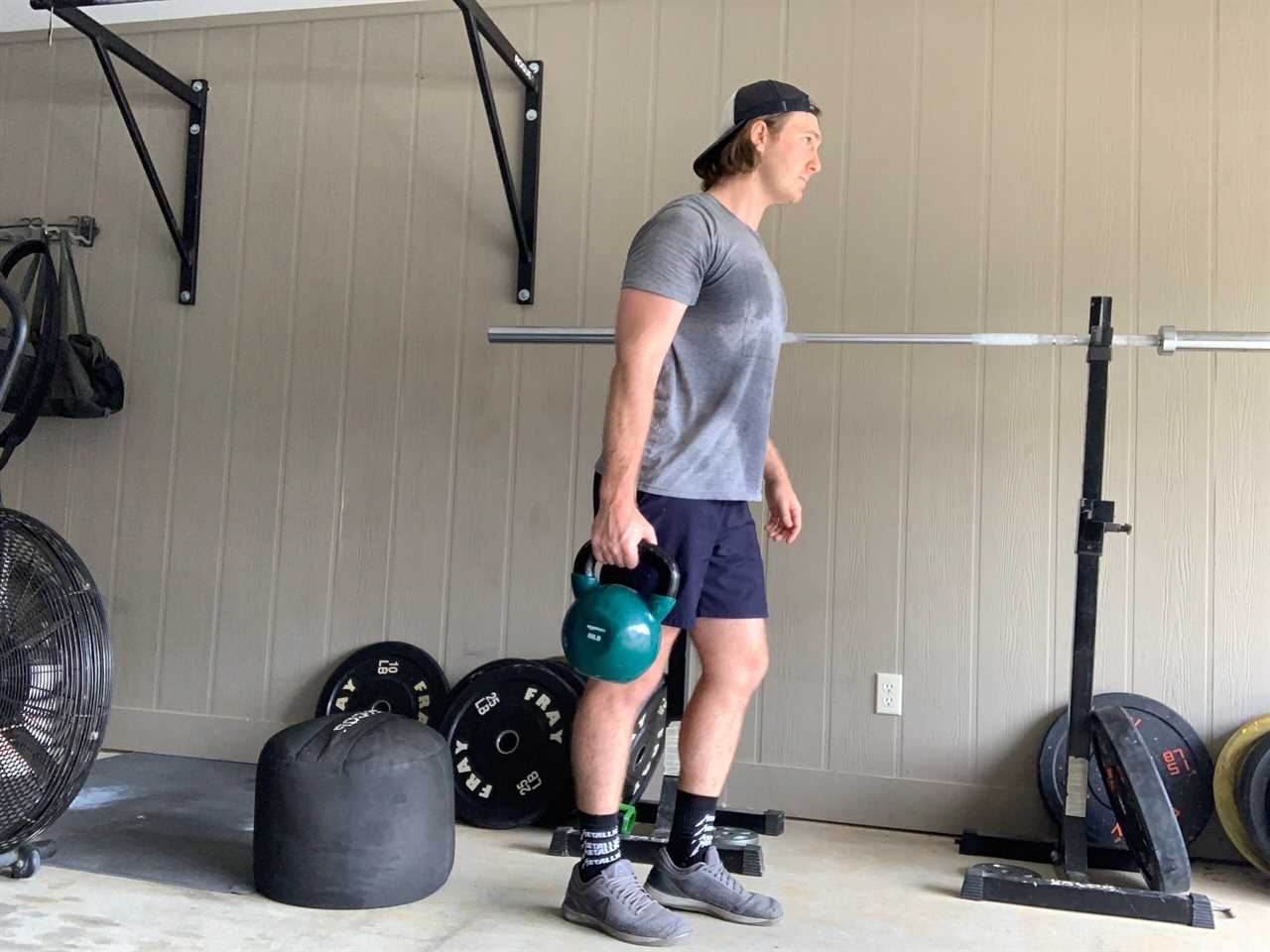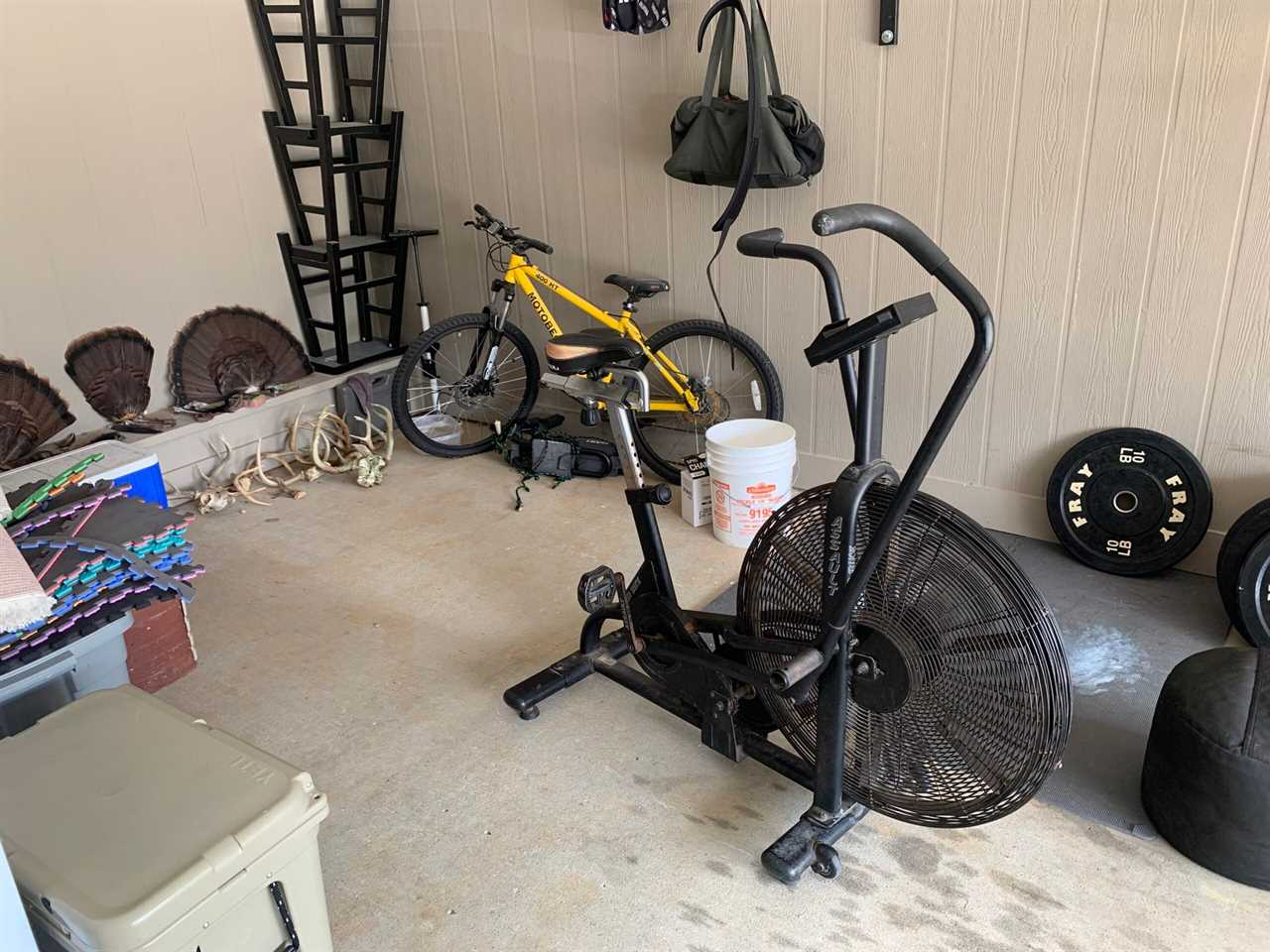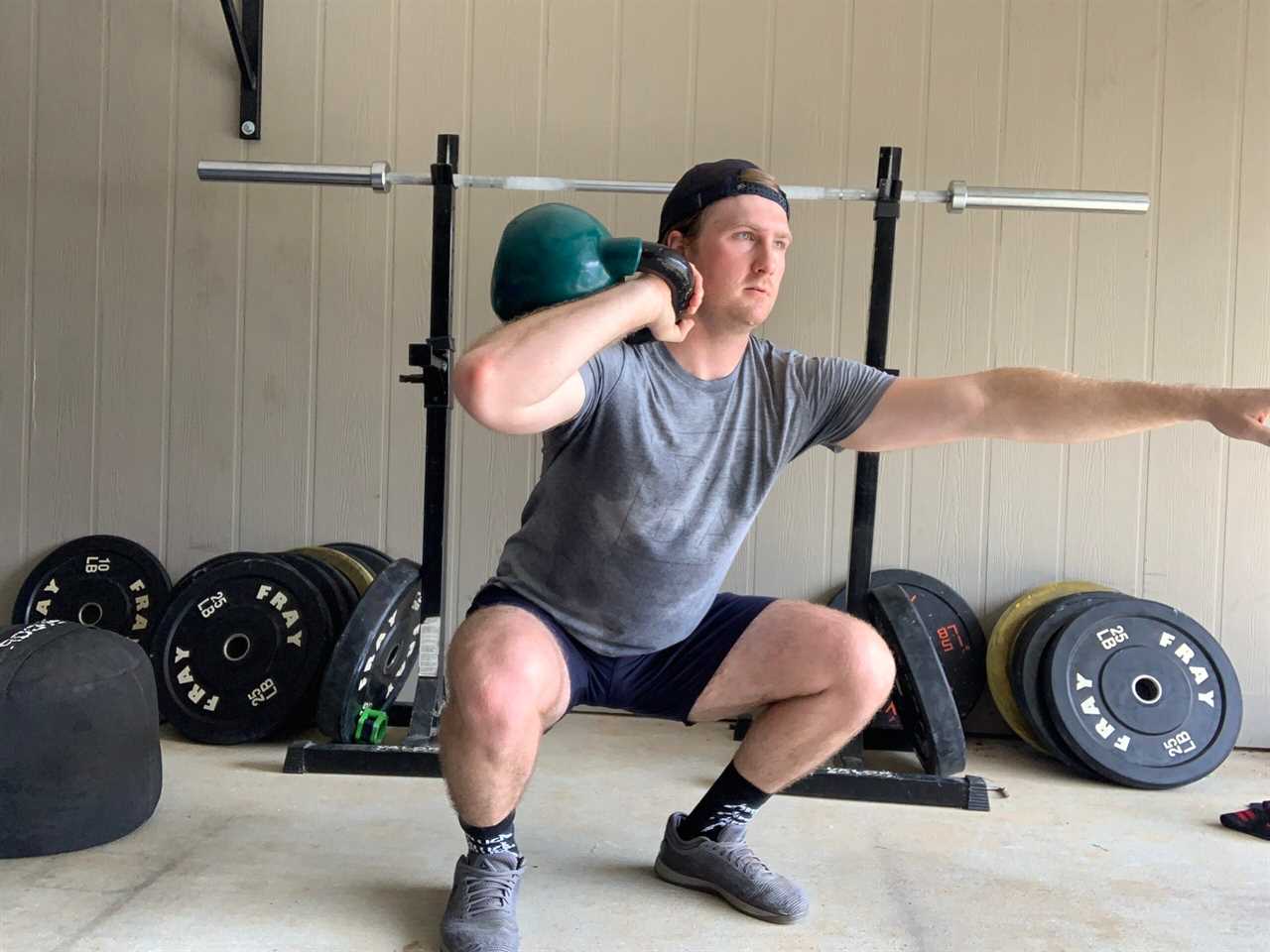Dragging a deer can be a serious work out, and it can cause serious health issues if you're out of shape. John Hafner
Legal shooting light was less than an hour away, and the woods were still silent— except my buddy’s heavy panting. I decided to take him to a public-land spot where I knew a group of does traveled through right at sunrise, so it was important that we set up well before then. I was fairly confident we could both tag a doe from this spot.
But we had to get there first. Through the darkness, we crossed several hills and hollows, but we had to keep stopping so my buddy could catch his breath. He loves to hunt, but most of his experience is limited to setups where you can practically park at the base of the tree.
Each stop cost us several minutes. The last time we stopped we were at least 200 yards from where I wanted to set up, but I knew if we kept going at the same sluggish pace, we’d bust the deer before we even made it there. So, we hung back. I let my buddy catch his breath, and we decided to still hunt on our way in. Sure enough, the doe trail was pounded with fresh tracks, and they were probably stuffing their bellies with clover and oats as we tried to figure out how to salvage that morning’s hunt.
If my buddy had been in better shape, there’s a good chance we could have punched two tags that morning. I’ve been working out consistently since I started powerlifting in middle school, and before my time at Outdoor Life, I spent five years as a fitness trainer and instructor at a local CrossFit gym. Workouts have just been an everyday part of my life more, but I know this isn’t the case for everyone. If you’ve been in the same sweaty boots as my buddy, and you want to do something about it, you should consider working out to improve your deer hunting.
Why Deer Hunters Need to Exercise in the Offseason

Adding workouts during the offseason can make you a better hunter. Adam Moore
Unlike backcountry big-game hunting in the West, which requires an obvious amount of fitness, whitetail deer hunting might not seem like much of an endurance sport. And for the most part, you can probably be a successful deer hunter without working out. I know tons of hunters who never lift a weight and kill big deer. But those hunters also have access to sweet, heavily managed private properties where they can load their deer into a side-by-side. Many of us don’t have this opportunity.
But even for private-land hunters, establishing a certain level of fitness can help prevent injuries and heart attacks. While chilling out in the offseason and preserving your energy for those all-day rut sits sounds like a good idea, studies show that an unexpected increase in exertion, like dragging a deer through half a mile of brush after a cold day on the stand, can lead to heart attacks in people who are inactive or at risk of heart failure. This study reveals that hunters who aren’t typically active can spike their heart rates to over 85 percent of their max when dragging a deer. This is equivalent to a high intensity workout. And if you’re not used to this, it can lead to serious problems.
Deer hunters, especially older deer hunters, need to consider muscle and joint related injuries as well. Weight or resistance training is the best form of injury prevention to ensure that you don’t throw out your back when you bend over to field dress your deer or load it into the side-by-side.
The good news is, it doesn’t take a ton of gear or time to get into deer hunting shape. Here are some things to consider to help get you started.
Basic Equipment and Workout Movements for Deer Hunters
If you think about deer hunting and its physical demands, it usually requires carrying relatively heavy loads over moderate to long distances. This could mean packing your stand into a deep honey hole or dragging a big buck over several hills after a successful hunt. So, if deer hunting were an exercise, it would most closely resemble stuff like farmer’s carry, sled drags, runs with weighted vests, sandbag carries, rucking, etc. And luckily, these exercises can be done in your garage or backyard with minimal equipment and without buying a gym membership.
Kettlebells
These are relatively inexpensive and highly versatile. You can invest in one kettlebell, and you’ll never exhaust the types of workouts you can do with it.
Rucksack/Backpack
Chances are, you probably have a backpack lying around that you can use for this, but if not, rucksacks are great for loading up and walking long distances to train for those deer hunts that take you miles from the truck.
Weighted Vest
Similar to the rucksack, not only does the weighted vest allow you to walk several miles with a heavy load, but it also distributes the weight evenly around your torso, allowing you to run and perform other exercises like weighted pullups, pushups, and air squats.
Sandbags
Like Kettlebells, sandbags give you a ton of versatility, and they allow you to easily change the weight by simply adding or removing sand.
Workout Movements
Farmer’s Carry

Farmer’s carries are a simple but effective way to improve grip strength for when you’re carrying a bow or rifle through the deer woods. Adam Moore
These involve holding weights, usually kettlebells or dumbbells, in each hand down by your sides and walking various distances. The key to farmer’s carries is to have a heavy enough load or long enough walking distance to make them worthwhile, and if you try these out, you’ll quickly see it doesn’t take much for these to be super effective. Farmer’s carries build and work the muscles that you typically use when you’re packing in and out of the woods when you’re loaded with gear, namely your grip strength. Grip strength is important for carrying gear, but also for hanging stands and climbing into them.
Sled Drag/Pull
This one is a no brainer. If you feel like you’re on the verge of a heart attack every time you drag a deer out of the woods, you should add these to your workout routine. Start slowly. You can do these with as little or much equipment as you have.
There are great sled options out there, but chances are you probably have materials lying around your home that you can use. Old tree stand harnesses that are taking up room in your garage will work just fine. You can make a few adjustments and use them to pull a weighted object behind you.
Sandbag Workouts
Whenever I need a change of pace in my workout routine, I’ll shake things up with some sandbag movements. Sandbag workouts can be extremely effective because the weight isn’t evenly distributed like normal barbell or dumbbell workouts. This often forces you to utilize other muscle groups that you don’t tend to activate with standard workout equipment. And if you’ve ever picked up a sandbag, you know it’s just a sack of dead weight.
These translate well to the deer woods if you’re lucky enough to have to pick up and move actual dead weight. Sandbag workouts also give you reps with picking up and carrying uneven loads like packing your stand in and out of the woods with your bowhunting backpack, bow, and extra layers.
Cardio for Deer Hunters
If you’re new to working out or prefer long runs or bikes, cardio is a great way to increase your heart rate (in a good way) and establish a baseline of fitness. It’s also free if you’re just running. But there are also rowing and biking machines that you can easily store in your garage and are more forgiving on your body than pounding the pavement. Studies show that increased cardiovascular fitness isn’t just healthy, it’s a modifiable indicator of long-term mortality (it helps you live longer).

Running or using machines like the assault bike can quickly improve your cardio capabilities. Adam Moore
The key to improving your cardiovascular fitness is to eventually build up to threshold workouts. Threshold workouts require you to push the limits of your workout capacity (hence the name) and then keep going, so that you expand your capabilities. These can look quite different depending on whether you’re training your max threshold for speed or looking to expand your mile pace during a marathon. Even if you don’t want to get super technical with it, you can establish your mile pace, and then run interval workouts, depending on how far you’re able to run, at a pace that challenges you but doesn’t completely empty the tank. There are plenty of free running programs or relatively inexpensive ones that can help improve your cardio.
Cardio alone is great, but incorporating some form of weight training has numerous health benefits. And for deer hunters, carrying or picking up weight is inevitable, and you should seriously consider adding it to your regimen if you want to improve your deer hunting.
Tips for Getting Fit for Deer Season
Whether you’re new to workout routines or a fitness guru, here’s a few tips that can help during your pursuit of getting deer fit.
Find Something You Enjoy
I’ve been consistently working out since I was 14, and I’ve found that the key is to make it fun. My workout routines involve a combination of cardio, strength training, and weightlifting. Most of the programs I follow keep it varied, which prevents me from getting bored. I suggest following one of these free fitness programs, though you’ll need to invest in more home gym equipment. If the idea of different, unexpected workouts everyday gives you a panic attack, try following a block weightlifting or cardio program. Nothing will make you want to quit working out faster than doing something you hate.
Treat It Like a Non-Negotiable
There are things you do every day (whether you realize it or not) that are not negotiable in your routine. For instance, no matter what’s on your schedule, I doubt you go an entire day without eating. You can do the same thing with exercising. Develop exercise as a habit and it won’t just be second nature to your deer hunting program, it’ll become part of your life routine.
Workout on Days When You Don’t Want to
I’ll be honest, I loathe some workout days. They typically happen when I’ve had a busy day at work, my kid goes to bed late, I’m stuffed from binging on takeout, and it’s 8 PM. It’s the perfect storm for skipping a workout. But when I finally muster the will power or stubbornness to walk all the way to my garage and workout, I never regret it, and I always feel better afterward.
I’m also convinced that this is excellent for training your mental fitness for deer season. Working out when you don’t want to helps train your mind. So during the hunting season, you’ll decide to hike into that more promising spot even though it requires you to wake up earlier and walk farther.
Just Do Something
If you’re currently doing nothing, then any exercising is an improvement. Even if you just start walking extra laps around your neighborhood, you’re already on the right track.

You’ll never exhaust the number of workouts kettlebells offer. Adam Moore
Last Effort
If you’re looking for a missing piece to help you tag more deer, exercising will probably help you more than any new bow or piece of hunting gear. The goal isn’t to win a bodybuilding contest. You just need to incorporate a healthy exercise routine into your deer tactics. Being fitter won’t automatically fill your freezer, but it sure can make it easier.
The post How to Get Into Shape for Deer Hunting (and Avoid Heart Attacks and Injuries This Season) appeared first on Outdoor Life.
By: Adam Moore
Title: How to Get Into Shape for Deer Hunting (and Avoid Heart Attacks and Injuries This Season)
Sourced From: www.outdoorlife.com/hunting/fitness-for-deer-hunters/
Published Date: Wed, 13 Jul 2022 20:37:54 +0000
----------------------------------------------
Did you miss our previous article...
https://manstuffnews.com/weekend-warriors/florida-trapper-and-wildlife-officer-find-a-python-nest-motherlode-in-big-cypress-national-preserve
 Backyard GrillingWeekend WarriorsAdvice from DadBeard GroomingTV Shows for Guys4x4 Off-Road CarsMens FashionSports NewsAncient Archeology World NewsPrivacy PolicyTerms And Conditions
Backyard GrillingWeekend WarriorsAdvice from DadBeard GroomingTV Shows for Guys4x4 Off-Road CarsMens FashionSports NewsAncient Archeology World NewsPrivacy PolicyTerms And Conditions
